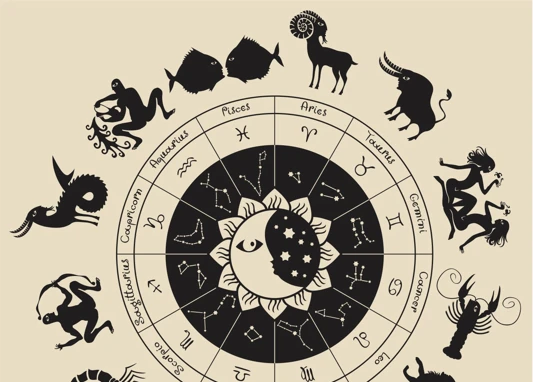Zodiac signs have long captivated human imagination, serving as a source of intrigue and wonder. The symbols associated with these signs have evolved throughout history, each telling a unique story of cultural, societal, and religious influences. From ancient civilizations to the modern era, the evolution of zodiac sign symbols reflects the ever-changing perspectives and beliefs of humanity. In this article, we will delve into the rich tapestry of zodiac symbolism, exploring its early origins, its presence in various ancient civilizations, its significance in medieval Europe, and its contemporary interpretation. Join us on this fascinating journey through time as we unravel the mysteries behind the evolution of zodiac sign symbols.
The Early Origins
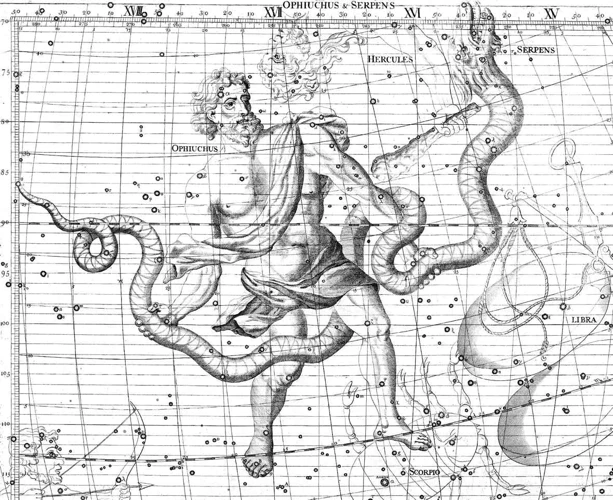
The early origins of zodiac sign symbols can be traced back to ancient civilizations where celestial observations played a crucial role in the development of astrology. The Sumerians, who inhabited Mesopotamia around 4,000 BCE, were among the first to assign meaning to celestial bodies, associating them with specific deities. This connection between the divine and the celestial can be seen in the creation of the zodiac.
The Sumerian zodiac consisted of 12 constellations, each representing a different month of the year. While the Sumerians were the precursors, it was the Babylonians who further developed and refined the zodiac system. They divided the zodiac into 12 equal parts, with each sign associated with a specific constellation. The Babylonians also assigned specific characteristics and personality traits to each zodiac sign, laying the foundation for the future interpretations of astrologers.
In parallel to the development of the zodiac in Mesopotamia, the ancient Egyptians also had their own system of astrological beliefs. They observed the annual flooding of the Nile and its correlation with the movement of the stars. The Egyptians associated each flood with the rising of certain stars, which eventually led to the creation of their own zodiac system.
During this time, the constellations and symbols associated with the zodiac signs began to emerge. The Greeks and Romans would later adopt and expand upon these symbols, further solidifying their significance in astrological practices. Thus, the early origins of zodiac sign symbols can be seen as a fusion of Sumerian, Babylonian, and Egyptian influences, laying the groundwork for the fascinating journey of zodiac symbolism throughout history. To learn more about the significance of zodiac signs in ancient cultures, click the following link: /significance-zodiac-signs-ancient-cultures/.
Zodiac Symbols in Ancient Civilizations
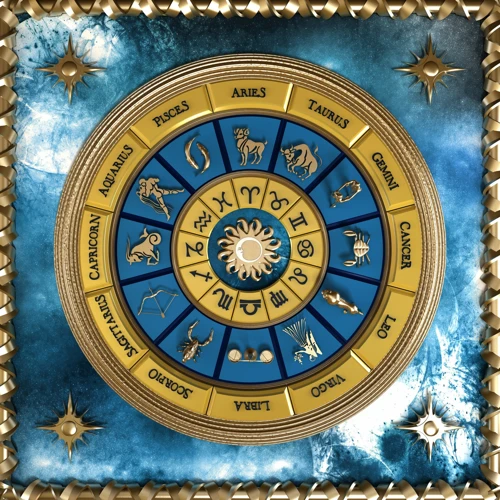
Zodiac symbols in ancient civilizations played a significant role in the understanding and interpretation of celestial phenomena. The Egyptians, known for their deep connection to the cosmos, associated specific animal and human representations with each of the zodiac signs. For instance, Aries was linked to the ram, Taurus to the bull, and Leo to the lion. These symbols not only represented the characteristics of the respective signs but also reflected the mythology and cultural beliefs of the time. Similarly, the Greeks and Romans integrated their mythology into the zodiac symbols, attributing divine stories to each sign. The use of symbols allowed for a visual representation of the zodiac signs, making them more accessible and understandable to the general population. The rich symbolism and mythological associations of the zodiac signs in ancient civilizations provided a foundation for the future development and interpretation of astrology. To explore more about the intersection of mythology and zodiac signs, click on the following link: /zodiac-signs-mythology-link/.
Egyptian Influence
The ancient Egyptians played a significant role in the development and influence of zodiac signs and symbols. Their deep connection to celestial observations and the natural rhythms of the universe led to the creation of their own zodiac system.
The Egyptian zodiac consisted of 12 signs, each associated with a different month of the year. These signs were represented by various animals and mythological creatures, each holding symbolic meaning. For example, the sign of Aries was represented by a ram, symbolizing power and leadership, while the sign of Cancer was represented by a scarab beetle, symbolizing rebirth and protection.
One of the most well-known Egyptian zodiac symbols is the sphinx, which represents the sign of Leo. This mythical creature with the body of a lion and the head of a human or animal embodies strength, wisdom, and the divine nature of the pharaohs.
The influence of Egyptian astrology extended beyond the symbolism of zodiac signs. It permeated various aspects of their society, including religion and personal beliefs. Egyptians believed that the position of the stars and planets at the time of a person’s birth influenced their personality traits and destiny.
The Egyptian influence on zodiac signs and astrological practices can still be felt today. The ancient knowledge and symbolism associated with their zodiac system continue to fascinate and resonate with people around the world. To learn more about the history and influence of zodiac signs in astrological practices, click the following link: /history-influence-zodiac-signs-astrological-practices/.
Mesopotamian Contributions
Mesopotamia, the land between the rivers Tigris and Euphrates, made significant contributions to the development of zodiac symbol systems. Building upon the Sumerian foundation, the Babylonians, who inhabited the region around 2,000 BCE, elevated astrology to new heights. They created an intricate celestial map by dividing the sky into 360 degrees, with twelve equal sections corresponding to the zodiac signs we are familiar with today.
The Babylonians also assigned specific star clusters, known as constellations, to each zodiac sign. These constellations were not only celestial markers but were also associated with mythical figures and animals. For example, Taurus represented the bull, Leo depicted the lion, and Scorpio signified the scorpion. The Babylonians believed that these constellations held divine power and influenced the destinies of individuals based on the alignment of the stars at the time of their birth.
The Babylonians developed a system of assigning planetary rulership to each zodiac sign. They believed that certain celestial bodies, such as the Sun and Moon, held immense influence over one’s character and fate. The planetary rulerships provided an additional layer of meaning to each zodiac sign, highlighting the interconnectedness between the celestial and human realms.
The Mesopotamian contributions to the zodiac sign symbols laid the groundwork for future civilizations. Their intricate maps, constellation associations, and planetary rulerships were later adopted by the Greeks, Romans, and other cultures throughout history. These ancient beliefs and practices continue to shape our understanding and interpretation of zodiac symbols today. To explore more about the history and influence of zodiac signs and astrological practices, follow the link: /history-influence-zodiac-signs-astrological-practices/.
Indian Astrology: Vedic Influence
Indian astrology, also known as Vedic astrology, holds a prominent place in the history of zodiac symbols. Its origins can be traced back to the ancient scriptures of the Vedas, which were composed in the Indian subcontinent around 1500 BCE. Vedic astrology places great importance on the position of celestial bodies at the time of a person’s birth and their influence on an individual’s life.
One of the key elements of Indian astrology is the concept of the Navagrahas, or the nine celestial bodies. These include the Sun, Moon, Mars, Mercury, Jupiter, Venus, Saturn, Rahu (North Lunar Node), and Ketu (South Lunar Node). Each of these celestial bodies is associated with a specific deity and has its own significance in determining a person’s fate and destiny.
In Vedic astrology, the zodiac is divided into 12 equal parts as well, with each part known as a Rashi or sign. However, unlike Western astrology, the starting point of the zodiac is not fixed in Vedic astrology. It is recalibrated based on the position of the Sun and the Spring Equinox in relation to the 12 zodiac signs. This is known as the sidereal zodiac, which takes into account the precession of the Earth’s axis.
The symbols used to represent the zodiac signs in Indian astrology reflect the rich cultural and mythological heritage of the region. Each sign is associated with a different animal or object, such as Aries (the Ram), Taurus (the Bull), and Leo (the Lion). These symbols hold deep meaning and are believed to influence a person’s personality, behavior, and destiny.
Indian astrology also incorporates other astrological techniques, such as birth charts (Kundali), planetary periods (Dashas), and astrological compatibility (Guna Milap), to provide a comprehensive understanding of an individual’s life and future.
The influence of Vedic astrology on zodiac symbols continues to be significant in modern India and beyond. Its intricate system and profound insights have made it a subject of deep study and belief for many. The Vedic influence on zodiac symbols adds a unique dimension to the rich tapestry of astrological practices around the world.
The Classical Zodiac
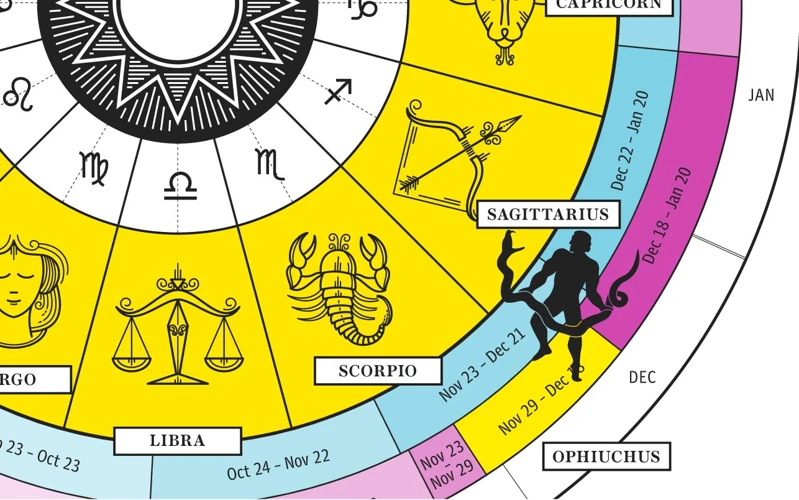
The classical zodiac refers to the zodiac system as it was known and developed by the ancient Greeks and Romans. This period marked a significant evolution in astrology and the symbolism associated with the zodiac signs. Greek and Roman astrology adopted the 12-constellation system introduced by the Babylonians, incorporating their own mythological narratives and interpretations. Each zodiac sign became associated with specific Greek and Roman deities, further intertwining mythology with astrology. The classical zodiac expanded upon the characteristics and traits associated with each sign, shaping the perception and understanding of the zodiac symbols for centuries to come. The Hellenistic period also saw an exchange of astrological knowledge between the Greeks and the Babylonians, contributing to the refinement and development of these symbols. Thus, the classical zodiac represents a pivotal moment in the evolution of zodiac symbolism, blending cultural influences and mythological narratives to create a rich and enduring astrological tradition.
Greek and Roman Zodiac Symbols
Greek and Roman civilizations made significant contributions to the development and symbolism of zodiac signs. In Greek mythology, the 12 zodiac signs were associated with characters and creatures from their rich pantheon of gods. These associations gave birth to powerful visual representations that would come to embody the zodiac symbols we recognize today.
1. Aries (The Ram): In Greek mythology, Aries represents the Golden Fleece sought by Jason and the Argonauts. The ram, whose fleece possessed magical properties, became synonymous with courage and heroism.
2. Taurus (The Bull): Taurus is closely tied to the myth of Zeus, who transformed into a bull to abduct Europa, the daughter of the Phoenician king. The bull symbolized strength, stability, and fertility.
3. Gemini (The Twins): Greek mythology tells the story of Castor and Pollux, twin brothers known as the Dioscuri. The two were inseparable, and Gemini became associated with duality, communication, and friendship.
4. Cancer (The Crab): The origin of Cancer lies in the myth of Heracles (Hercules) and the second of his Twelve Labors. He fought against the giant crab sent by Hera, which was later placed among the stars as a constellation.
5. Leo (The Lion): Leo is associated with the Nemean Lion, slain by Heracles as part of his Labors. The lion symbolizes courage, authority, and leadership.
6. Virgo (The Virgin): Virgo’s symbolism originates from various myths, including the goddess Demeter and her daughter Persephone. Virgo represents purity, innocence, and harvest.
7. Libra (The Scales): The scales of Libra are linked to the goddess Astraea, who represented justice and fairness. The scales reflect balance, equality, and harmony.
8. Scorpio (The Scorpion): Scorpio is associated with the scorpion that killed Orion in Greek mythology. The scorpion embodies passion, intensity, and transformation.
9. Sagittarius (The Archer): Sagittarius is depicted as a centaur, half-human and half-horse, known as Chiron. Chiron was a wise and skilled archer, representing wisdom, exploration, and adventure.
10. Capricorn (The Goat): Capricorn draws its origins from the myth of the god Pan, who transformed into a goat to escape the monster Typhon. The goat symbolizes ambition, discipline, and resourcefulness.
11. Aquarius (The Water Bearer): Aquarius is associated with the myth of the boy Ganymede, who served as a cup-bearer to the gods. Aquarius represents innovation, humanitarianism, and intellectualism.
12. Pisces (The Fish): Pisces is linked to the fish that carried Aphrodite and her son Eros to safety. The fish symbolizes compassion, intuition, and spirituality.
The fusion of Greek and Roman mythology solidified the symbolism behind the zodiac signs, creating a lasting impact on astrology and its interpretation of human characteristics and destiny. The intricate stories and imagery associated with each zodiac symbol continue to fascinate and captivate individuals as they explore the depths of their own astrological identities.
Hellenistic and Babylonian Astrology Exchange
The Hellenistic period marked a significant exchange of astrological knowledge between the Greeks and the Babylonians, further shaping the development of zodiac symbols. During this time, Greek astronomers and astrologers became exposed to the elaborate Babylonian zodiac system and incorporated it into their own practices.
One of the key figures in this exchange was the Greek astronomer and mathematician Hipparchus, who lived in the 2nd century BCE. Hipparchus was greatly influenced by Babylonian astronomy and recognized the need for a more accurate zodiac system. He introduced the notion of precession, the slow movement of the Earth’s axis which caused the stars to gradually shift positions over time. This discovery led to refinements in the zodiac, ensuring that it remained aligned with the changing celestial patterns.
The Hellenistic period also witnessed the merging of Greek and Babylonian astrological concepts, resulting in the assimilation and reinterpretation of zodiac symbols. The Greeks adopted the Babylonian zodiac and assigned their own mythological figures to each sign. For instance, the Greek constellation of Aries was identified with the Babylonian MULLU, a creature with the body of a lion and the head of a human. This fusion of Greek and Babylonian symbolism laid the groundwork for the zodiac system as it is known today.
During the Hellenistic period, astrology gained popularity and became more accessible to the masses. Astrologers began to write horoscopes, providing personalized readings based on a person’s zodiac sign and the positions of celestial bodies at the time of their birth. This democratization of astrology allowed for a wider dissemination of zodiac symbols and their associated meanings.
The exchange between Hellenistic Greece and Babylon had a profound impact on the development of zodiac symbols, bringing together different cultural and astrological traditions. The merging of Greek and Babylonian astrology during this period laid the foundation for the continued evolution and interpretation of zodiac signs. It marked a pivotal moment in history where the zodiac system expanded its influence and became more integrated into various aspects of society.
Eastern Zodiac Systems
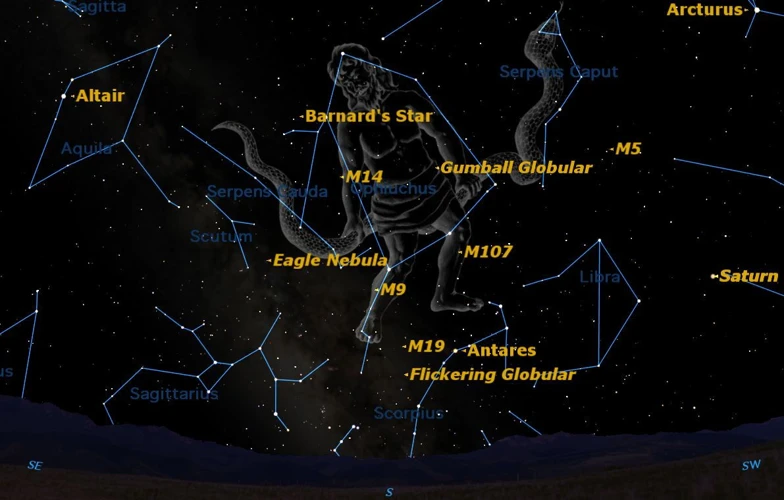
Eastern zodiac systems have their own unique and captivating history, distinct from the Western zodiac. One of the most well-known systems is the Chinese zodiac, which dates back over 2,000 years. Unlike the Western zodiac, which is based on the position of the sun, the Chinese zodiac is based on the lunar calendar and consists of twelve animal signs. Each animal represents a year in a repeating twelve-year cycle, with each year believed to embody different characteristics and traits. The Japanese zodiac, known as the “Eto” or “Juunishi,” also draws inspiration from the Chinese zodiac. However, it incorporates its own cultural influences and mythology. The Japanese zodiac includes animal signs such as the Rat, Ox, Tiger, Rabbit, and more, each associated with different meanings and symbolisms. The Eastern zodiac systems provide a fascinating look into the rich cultural traditions and beliefs of these ancient civilizations.
Chinese Zodiac
The Chinese Zodiac, also known as Shengxiao, is a unique system that has a rich history and cultural significance. Unlike the Western zodiac, the Chinese zodiac is based on a twelve-year cycle, with each year representing a different animal sign. These animal signs, in order, are the Rat, Ox, Tiger, Rabbit, Dragon, Snake, Horse, Sheep, Monkey, Rooster, Dog, and Pig.
Legend has it that the Jade Emperor, the supreme deity in Chinese mythology, organized a race where the twelve animals had to cross a river. Their order of arrival determined their position in the zodiac. The rat, being clever and resourceful, rode on the back of the ox and jumped off at the last moment to secure the first place, while the pig, being slow and lazy, arrived last. This colorful tale not only provides a fun explanation for the order of the zodiac animals but also reflects the cultural values and characteristics associated with each animal sign.
Each animal sign in the Chinese Zodiac is believed to have specific attributes and traits, which are said to influence the personality and destiny of individuals born under that sign. For example, those born in the Year of the Rat are believed to be quick-witted, adaptable, and resourceful, while individuals born in the Year of the Dragon are believed to be ambitious, confident, and charismatic. These animal signs are a source of pride and identity for the Chinese people, and they play a significant role in various aspects of Chinese culture, from astrology to folklore.
It is important to note that the Chinese Zodiac is not solely based on the animal signs. The Chinese lunar calendar, known as the lunisolar calendar, also factors in elements such as the five elements (wood, fire, earth, metal, water) and the Yin and Yang energies. These additional elements further shape the interpretation and predictions associated with each animal sign, adding complexity to the Chinese zodiac system.
The Chinese Zodiac is a fascinating system that has its roots deeply embedded in Chinese mythology and culture. The animal signs, along with the lunar calendar and other elements, form a unique framework for understanding personality traits, compatibility, and life predictions. The Chinese Zodiac continues to be cherished and celebrated, not only in China but also by people around the world who find joy and fascination in its symbolism.
Japanese Zodiac: The Origins of Animal Signs
The Japanese zodiac, known as Juunishi, has its own unique origins and symbolism. Unlike the Western zodiac, which is based on constellations, the Japanese zodiac is centered around animal signs. This system draws inspiration from Chinese astrology, which was introduced to Japan in the 6th century. The Chinese zodiac consists of 12 animal signs, each representing a specific year in a 12-year cycle. The Japanese adopted this concept and incorporated their own cultural significance to create what is now known as the Juunishi.
The origins of animal signs in the Japanese zodiac can be traced back to ancient Chinese folklore. According to legends, the Jade Emperor called upon animals to participate in a race, with the order of their arrival determining their position in the zodiac. The clever rat, knowing it was not a strong swimmer, hitched a ride on the ox’s back and arrived first. The strong and diligent ox came in second, followed by the other animals in the order they finished the race.
Each animal sign in the Japanese zodiac carries its own unique traits and characteristics, believed to influence the personality and destiny of individuals born under that sign. The 12 animal signs in the Juunishi include rat, ox, tiger, rabbit, dragon, snake, horse, sheep, monkey, rooster, dog, and boar. These animal signs are associated with specific years and are believed to hold symbolic significance in various aspects of life, including compatibility, career choices, and overall fortune.
The animal signs in the Japanese zodiac have become deeply ingrained in Japanese culture, influencing various aspects of daily life. They are commonly found in traditional folklore, art, and celebrations. For example, during New Year celebrations in Japan, it is common to find decorations and trinkets featuring the animal sign of the upcoming year.
The origins of animal signs in the Japanese zodiac showcase the cultural exchange between China and Japan, as well as the enduring popularity and belief in astrology. The animal signs not only serve as a way to identify individual attributes but also reflect the rich tapestry of Japanese folklore and traditions. The Japanese zodiac and its animal signs continue to captivate and inspire people, providing a unique perspective on astrology and its impact on society.
The Influence of Astrology in Medieval Europe
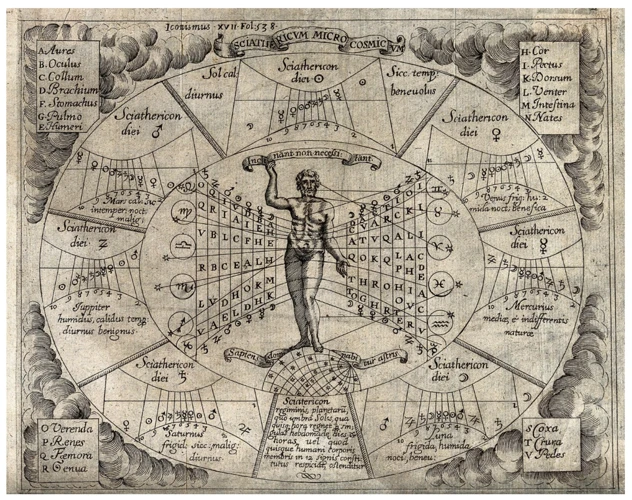
Astrology played a significant role in medieval Europe, permeating various aspects of society and influencing both religious and secular beliefs. During this time, astrological practices were closely tied to the Christian faith and were often used to understand and interpret divine will. Astrology was seen as a tool for predicting events, making important decisions, and understanding personal characteristics. The zodiac symbols became intertwined with Christian symbolism, with each sign representing different biblical figures or virtues. Astrology became a respected field of study, with universities incorporating it into their curriculum. It was during the medieval period that astrology experienced a resurgence, with the translation and integration of ancient Greek and Arabic texts. The influence of astrology in medieval Europe permeated all levels of society, shaping art, architecture, and even political decisions. Its significance was recognized by kings and nobles, who sought astrological advice for matters such as relationships, warfare, and governance. Astrology also had a profound impact on medicine, as physicians used astrological charts to diagnose and treat illnesses. The intricate interplay between astrology and medieval European culture is a testament to the enduring influence of zodiac symbols and their interpretation.
Transformation of Zodiac Symbolism
The transformation of zodiac symbolism during the medieval era witnessed a blending of astrological interpretations from various cultures, resulting in a rich tapestry of beliefs and representations. It was during this time that the zodiac signs began to be associated with specific allegories and mythological figures.
In medieval Europe, the signs of the zodiac became closely intertwined with Christian symbolism. Each sign was aligned with a biblical figure or a religious concept, reflecting the influence of Christianity on astrological practices. For example, Aries, the first zodiac sign, was linked with the biblical figure of Adam, symbolizing the beginning of creation and the resurrection. Taurus was associated with the bull symbolizing strength, sacrifice, and the biblical character of Moses.
Additionally, the medieval period saw the development of elaborate zodiacal motifs in art and architecture. Cathedrals and churches adorned with zodiacal symbols became a common sight, reinforcing the influence and significance of the zodiac during this time. These symbols were believed to hold a deeper spiritual meaning, serving as a reminder of the divine relationship between God and the celestial bodies.
The transformation of zodiac symbolism during the medieval era also extended to the interpretation of individual zodiac signs. Astrologers of the time assigned specific personality traits, characteristics, and even physical appearances to each sign. This added a new layer of depth and complexity to the zodiac’s symbolism, as people began to identify with and explore the unique attributes associated with their zodiac signs.
In essence, the transformation of zodiac symbolism during the medieval era exemplified the fusion of astrology, mythology, and religious beliefs. It emphasized the enduring and ever-evolving nature of zodiac interpretation, as diverse cultures and belief systems left their mark on the symbolism and significance of the zodiac signs.
Christianity and the Zodiac
Christianity and the Zodiac have had a complex relationship throughout history. In the early days of Christianity, some church leaders viewed astrology and the zodiac as pagan practices, often associated with idolatry. As a result, there was a period of time when the use of astrological symbols, including the zodiac, was discouraged among Christians.
However, over time, a more nuanced understanding of astrology and its relationship with Christianity developed. Some Christian scholars began to interpret the zodiac as a divine creation, reflecting the glory of God’s creation. They saw the zodiac signs as celestial markers that pointed to the birth of Christ and the unfolding of God’s plan for salvation.
One of the most significant connections between Christianity and the zodiac is seen in the representation of Jesus as the “Lion of Judah.” This symbol draws upon the zodiac sign of Leo, which is associated with strength and leadership. The lion, as a symbol, is often used to represent Jesus in Christian art and iconography.
The symbolism of the zodiac signs can be found in Christian architectural designs, particularly in medieval churches. The zodiac signs were sometimes incorporated into stained glass windows or carved onto church facades, serving as a reminder of God’s creation and providence.
It is worth noting that while the connection between Christianity and the zodiac exists, it is not widely embraced by all Christian denominations and traditions. The interpretation and acceptance of astrology and zodiac symbolism can vary greatly within the Christian community.
The relationship between Christianity and the zodiac is complex and multifaceted. While some early Christian leaders rejected astrological practices, others found symbolism and meaning in the zodiac signs, incorporating them into Christian art and architecture. The discussion of astrology and the zodiac within Christianity continues to spark theological debates and reflections on the intersection of faith and symbolism.
Zodiac in Modern Times
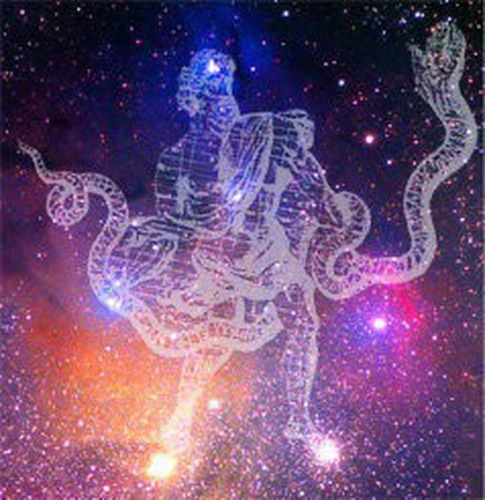
In modern times, the concept of the zodiac continues to captivate people’s imaginations. While the core symbolism and interpretations of the zodiac signs have remained relatively consistent, there have been notable developments and changes. One significant event that sparked controversy and debate was the introduction of a 13th zodiac sign called Ophiuchus. This addition disrupted the traditional 12-sign system, causing a stir among astrology enthusiasts. However, it is important to note that this addition did not gain widespread acceptance and is not recognized by most astrologers.
Additionally, the interpretation of zodiac sign symbols has evolved to reflect contemporary beliefs and values. Astrologers now incorporate modern concepts and psychology into their readings, providing a more nuanced understanding of zodiac personalities and compatibility. The rise of the internet and social media platforms has facilitated the accessibility and popularity of astrology, creating a space for zodiac enthusiasts to connect and share their experiences.
Despite its critics, the zodiac continues to be a source of fascination and comfort for many, offering insights into personality traits, compatibility, and life’s events. Whether individuals wholeheartedly believe in the power of the zodiac or view it as an entertaining diversion, its presence in modern times persists and continues to spark curiosity and intrigue.
The Introduction of 13th Zodiac Sign
The introduction of the 13th zodiac sign created quite a stir and led to a heated debate among astrologers and enthusiasts alike. In 2016, NASA announced that there is a thirteenth constellation called Ophiuchus, which falls within the ecliptic and is said to disrupt the traditional astrological calendar. Ophiuchus, symbolized by a serpent bearer, was not included in the classical zodiac system which only recognized twelve signs. This revelation sparked confusion and raised questions about the accuracy and validity of astrological predictions.
However, it is important to note that this news from NASA does not align with the astrological understanding of the zodiac signs. Astrologers argue that the zodiac signs are not determined by the actual constellations, but rather by divisions of the ecliptic. The ecliptic is a circular path followed by the Sun, and it is divided into twelve equal parts, each representing one zodiac sign. This division has been the basis of astrology for centuries.
Despite the controversy, the introduction of the 13th zodiac sign did not significantly impact the majority of astrologers and their practices. For many, the classical zodiac system remains deeply rooted in tradition and symbolism, with interpretations based on ancient wisdom and personal observations. It is worth mentioning that while some astrologers may choose to incorporate Ophiuchus into their readings, it remains a less recognized and widely accepted addition to the zodiac.
The introduction of the 13th zodiac sign, Ophiuchus, caused a considerable stir in the astrological community. While NASA’s announcement sparked debate, astrologers continue to rely on the traditional twelve zodiac signs that have been associated with specific traits and characteristics for centuries. The inclusion or exclusion of Ophiuchus remains a matter of personal belief and interpretation within the realm of astrology.
Contemporary Interpretation of Symbols
In contemporary times, the interpretation of zodiac sign symbols has evolved alongside the changing beliefs and cultural influences of society. Astrologers and enthusiasts continue to explore and interpret the meanings behind these symbols, offering insights into personality traits, compatibility, and life events. Here are some key aspects of the contemporary interpretation of zodiac symbols:
1. Personality Traits: Each zodiac sign is associated with specific personality traits, which are believed to be influenced by the position and alignment of the celestial bodies at the time of a person’s birth. For example, Aries is often associated with courage, determination, and leadership qualities, while Taurus is known for its stability, practicality, and determination.
2. Compatibility and Relationships: Contemporary astrologers analyze zodiac sign compatibility to determine the potential harmony or challenges in relationships. The combination of different signs is believed to have a profound impact on the dynamics and compatibility between individuals. Understanding these compatibility factors can help individuals navigate their personal and professional relationships.
3. Life Events and Timing: Astrologers also interpret zodiac symbols in the context of life events and timing. The alignment of the planets and the zodiac signs at specific times can be used to make predictions about career advancements, love life, health, and other significant life events. This practice, known as predictive astrology, aims to provide guidance and insight into the potential influences and outcomes that may arise in an individual’s life.
4. Symbolic Representations: The symbols associated with zodiac signs have become iconic representations of the signs themselves. Contemporary interpretations often incorporate these symbols into various forms of art, jewelry, and popular culture. The symbols, such as the ram for Aries or the scales for Libra, have become recognized emblems of their respective zodiac signs.
5. Personal Growth and Self-Reflection: Many individuals turn to astrology for personal growth and self-reflection. By exploring their zodiac signs and symbols, individuals may gain a deeper understanding of their strengths, weaknesses, and potentials. This exploration can lead to personal development and the pursuit of a more fulfilling life.
The contemporary interpretation of zodiac sign symbols encompasses personality traits, compatibility analysis, life event predictions, symbolic representations, and personal growth. Whether one believes in the power of astrology or not, the exploration of zodiac symbols continues to captivate and provide insight to individuals seeking a greater understanding of themselves and their place in the world.
The Significance and Belief in Zodiac Symbols
The significance and belief in zodiac symbols have been deeply ingrained in human culture for centuries. People have looked to the zodiac for guidance, self-understanding, and predictions about their future. The belief in zodiac symbols stems from the idea that celestial bodies have a profound influence on human behavior and destiny.
One of the main reasons for the enduring belief in zodiac symbols is the concept of astrology, which suggests that the positioning of celestial bodies at the time of a person’s birth can shape their personality traits and characteristics. Astrologers interpret the zodiac signs as a way to understand an individual’s strengths, weaknesses, and potential paths in life. This belief in astrology and zodiac symbols has persisted across different cultures and time periods.
In many ancient civilizations, the zodiac played a crucial role in religious practices and societal decision-making. The alignment of celestial bodies was seen as a sign of divine will and was used to determine auspicious times for various activities such as planting crops, conducting ceremonies, or even going to war. The zodiac symbols provided a framework for understanding the influence of the cosmos on human affairs.
Zodiac symbols have been embraced as a form of self-expression and identity. People often identify strongly with their zodiac sign, associating themselves with the characteristics and traits attributed to it. The symbol of their zodiac sign can become a personal emblem, representing a sense of belonging and individuality.
Despite skepticism and scientific scrutiny, the belief in zodiac symbols persists in modern times. Many individuals still consult horoscopes and astrologers, seeking guidance and insight into their lives. While some view it as mere entertainment, others genuinely believe in the power of zodiac symbols to provide meaningful insights and direction.
The significance and belief in zodiac symbols have endured throughout history due to their role in providing guidance, self-understanding, and a connection to the celestial forces. Whether rooted in ancient religious practices or embraced as a form of self-expression, zodiac symbols continue to captivate and hold meaning for many individuals.
Conclusion
In conclusion, the evolution of zodiac sign symbols throughout history is a testament to the ever-changing beliefs, cultures, and interpretations of humanity. From its early origins in ancient civilizations such as Sumer, Babylon, and Egypt, to its integration into Greek, Roman, and Hellenistic astrology, the zodiac has undergone various transformations. These transformations have been influenced by factors such as societal shifts, religious ideologies, and cultural exchanges. In medieval Europe, the symbolism of the zodiac underwent a significant transformation as it became intertwined with Christianity. However, in modern times, the zodiac has seen both controversy and adaptation, with the introduction of a 13th zodiac sign and contemporary reinterpretations of the symbols. Despite these changes, the belief in zodiac symbols and their significance continues to captivate individuals around the world, providing a tool for self-reflection, guidance, and connection to the cosmos. The journey of the zodiac sign symbols is a reflection of the human quest for meaning and understanding in the mystical realm of astrology. As we continue to explore and interpret the universe, the evolution of zodiac sign symbols will undoubtedly continue, fascinating generations to come.
Frequently Asked Questions
What is the purpose of zodiac sign symbols?
The purpose of zodiac sign symbols is to represent different personality traits, characteristics, and influences associated with each astrological sign. They provide a visual representation and help to identify and understand the unique qualities attributed to individuals born under specific zodiac signs.
How were the zodiac sign symbols created?
The creation of zodiac sign symbols was influenced by ancient civilizations’ observations of celestial bodies and their connection to various deities. Over time, different cultures assigned specific constellations and symbolic representations to each zodiac sign, forming the basis for their respective symbols.
Do zodiac sign symbols have universal meanings?
While there are common traits and interpretations associated with each zodiac sign symbol, their meanings can vary across different cultures and astrological practices. Interpretations may also vary among astrologers, taking unique perspectives and influences into account.
What do zodiac sign symbols reveal about a person?
Zodiac sign symbols offer insights into a person’s personality, behavior, and potential life experiences. They provide a framework to understand someone’s strengths, weaknesses, and compatibility with others, as well as their tendencies and inclinations in various aspects of life.
Can zodiac sign symbols predict future events?
Zodiac sign symbols alone cannot predict specific future events. However, they can offer a general understanding of potential themes and energies influencing a person’s life. Combined with other astrological practices and techniques, they may provide deeper insights into future possibilities.
Have zodiac sign symbols changed over time?
Yes, zodiac sign symbols have evolved and changed throughout history due to cultural influences, astrological developments, and shifts in beliefs. The symbols we recognize today are the result of centuries of interpretation and refinement.
Why are animals associated with some zodiac sign symbols?
Animals are associated with some zodiac sign symbols due to their symbolic representation of certain traits and characteristics. Animals can capture the essence of different human qualities and are used to personify and express the symbolism associated with specific zodiac signs.
Are zodiac sign symbols only based on Western astrology?
No, zodiac sign symbols are not only based on Western astrology. Eastern astrology systems, such as Chinese and Japanese astrology, also utilize zodiac symbols. Each culture has its own unique set of symbols and interpretations associated with the zodiac signs.
How can I determine my zodiac sign symbol?
Your zodiac sign symbol can be determined by your date of birth. Each zodiac sign corresponds to a specific range of dates. By identifying which date range your birthday falls into, you can determine your zodiac sign symbol.
Do zodiac sign symbols have any scientific basis?
Zodiac sign symbols and astrology, in general, are not scientifically proven methods. They are considered pseudoscience and are not supported by empirical evidence. However, astrology continues to have cultural and personal significance for many individuals.

